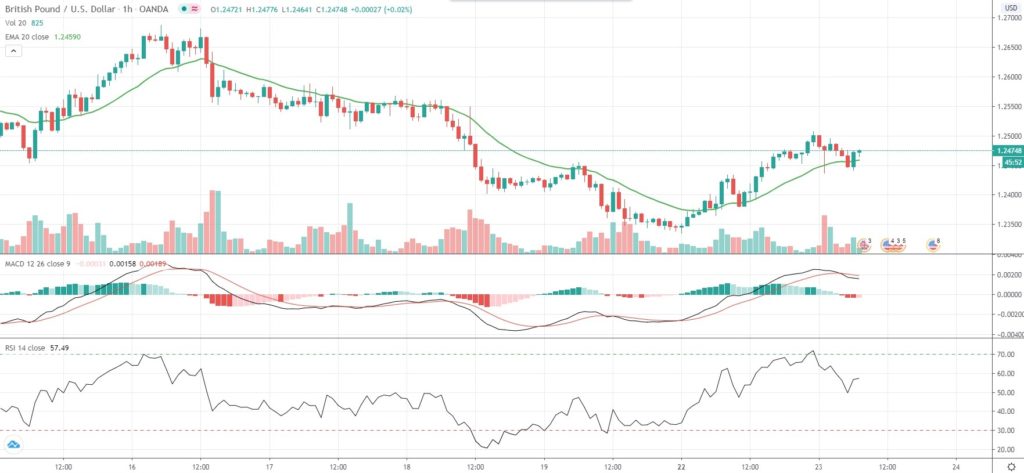Investor risk sentiment took a hit early on Tuesday, sending GBP/USD lower after yesterday’s rally, as reports emerged stating the trade deal between the United States and China is “over.” The news raised concerns that the already strained ties between the two major economic powers could now deteriorate and undermine flow of capital and supply chains.
White House trade adviser Peter Navarro did not provide more details on actual policy implications, while he said the breakdown was in part due to Washington’s criticism over how Beijing had handled the coronavirus outbreak.
“It’s not clear exactly what is over, but today’s market reaction suggests that after riding on optimism on the economy, markets are now ready to test the pessimistic side of the story,” Daisuke Uno, chief strategist at Sumitomo Mitsui Bank, said.
Later Navarro said that his remarks had been taken out of context, which helped ease earlier fears over the fate of the deal.
US President Trump also played down concerns as he said in a tweet: “China trade deal is fully intact. Hopefully they will continue to live up to the terms of the agreement.”
As of 6:43 GMT on Tuesday GBP/USD was inching down 0.04% to trade at 1.2465, after touching an intraday low of 1.2437 during early Asian session.
On today’s economic calendar, activity in United Kingdom’s sector of manufacturing probably contracted at a lesser rate in June, with the corresponding Purchasing Managers’ Index coming in at a reading of 45.0, according to the median forecast by experts. In May, the PMI was reported at 40.7, as the sub-indexes of output, new orders and export sales continued to decrease at sharp rates, though slower compared to the record rates registered in April. The sector shedded jobs at the second-highest rate on record.
At the same time, activity in United Kingdom’s sector of services probably shrank at a slower rate in June from a month ago, with the respective PMI coming in at a reading of 40.0, according to market expectations. In May, the Services PMI stood at 29.0, indicating the second-sharpest contraction in the sector since the survey was initiated in July 1996.
A larger-than-expected improvement in either of the gauges would certainly lend support to the Sterling. The IHS Markit/CIPS will release the preliminary data at 8:30 GMT.
In the United States, a report by IHS Markit at 13:45 GMT may show manufacturing activity shrank at a slower rate in June, with the respective PMI coming in at a reading of 48.0. In May, the gauge was reported at a final 39.8, which indicated the second-steepest deterioration in manufacturing sector conditions since April 2009.
Additionally, the IHS Markit Services PMI probably also pointed to a less steep contraction in activity in June from a month ago. The index probably rose to a level of 46.5 from 37.5 in May.
A separate report by the US Census Bureau at 14:00 GMT may show new home sales rose 2% to 0.634 million units in May, according to market consensus. In April, sales of new single-family homes in the country went up 0.6% from a month ago to an annualized rate of 0.623 million.
Bond Yield Spread
The spread between 2-year US and 2-year UK bond yields, which reflects the flow of funds in a short term, equaled 27.2 basis points (0.272%) as of 6:15 GMT on Tuesday, up from 26.0 basis points on June 22nd.
Daily Pivot Levels (traditional method of calculation)
Central Pivot – 1.2428
R1 – 1.2519
R2 – 1.2569
R3 – 1.2661
R4 – 1.2753
S1 – 1.2378
S2 – 1.2286
S3 – 1.2236
S4 – 1.2187






